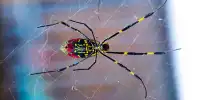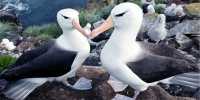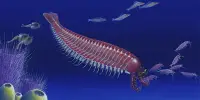The “snaky crocface” is the name given by researchers to a brand-new species of polycotylid plesiosaur. The name of the new species, Serpentisuchops pfisterae, is technically correct, but the Latin and Greek translations of “snaky crocface” are rather accurate.
Contrary to popular belief, plesiosaurs are sea reptiles, not dinosaurs. Most plesiosaurs fit into one of two categories: tiny head, short snout, long neck, or huge head, long snout, short neck. The remarkable feature of the Snaky Crocface is that it has both a long, snaky neck and big, crocodile-like, extended jaws, whereas earlier fossil discoveries often only featured one or the other.
The monster had a neck made up of 32 vertebrae and was almost 7 meters (23 feet) long, according to the skeleton pieces that scientists have been examining. The Upper Cretaceous Serpentisuchops pfisterae fossil is found in Wyoming’s Pierre Shale and dates to between 66 and 100 million years old. The Triassic period, 251 to 199 million years ago, is when the earliest plesiosaur specimen was ever discovered.
Since they were discovered in 1995, the plesiosaur fossils have been on exhibit at the Glenrock Paleontological Museum for more than 25 years.
The team has also been examining the dinosaur’s teeth, which were discovered at the site in 19 full sets, with one whole tooth that was still in its plesiosaur jaw socket. They contend that the teeth of the lower and upper jaw were securely linked when the mouth was closed, based on the spacing of the teeth within the jaws.
The researchers hypothesize that the plesiosaur’s enormous, elongated jaws would have carried 36 teeth that weren’t serrated and weren’t utilized for biting through bones, indicating that it probably consumed small fish and cephalopods from the Western Interior Seaway. According to the researchers, the snaky crocodile lived up to its name by swaying through the water and swiveling its neck to snare its victim.
The limbs and pectoral girdle, which join the upper limbs to the skeleton, are among the missing parts of the animal’s body, which is only around 35 percent of the total.
There is substantial disagreement regarding the plesiosaur’s swimming technique. Some specialists contend that the animals employed a rowing action, while other research contends that they flew through the water like penguins.
















